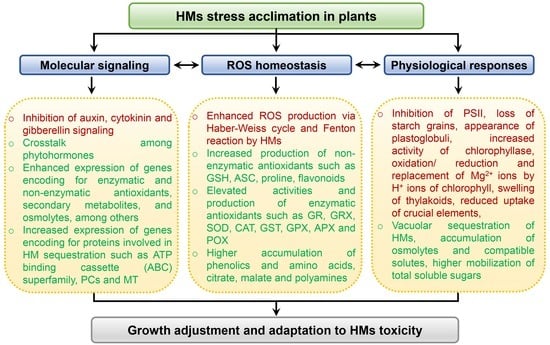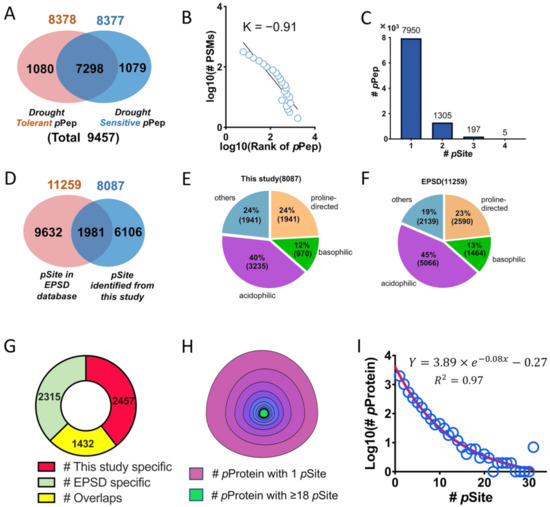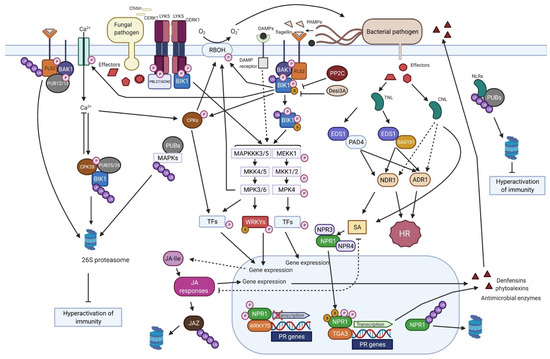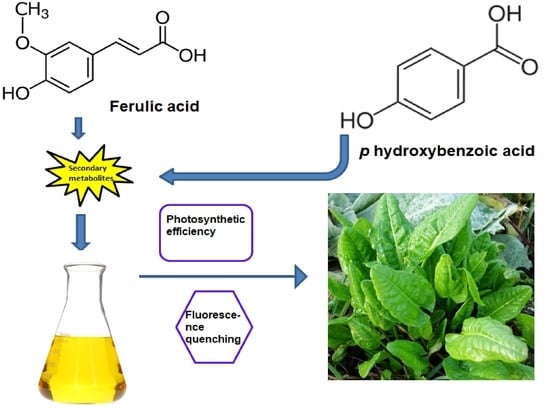Cellular and Molecular Mechanisms Governing Stress Response in Plants
Share This Topical Collection
Editors
 Dr. Giovanna Serino
Dr. Giovanna Serino
 Dr. Giovanna Serino
Dr. Giovanna Serino
E-Mail
Website
Collection Editor
Department of Biology and Biotechnology, Sapienza Università di Roma, 00185 Rome, Italy
Interests: plant development; protein homeostasis; ubiquitin proteasome signaling; protein degradation; arabidopsis thaliana
 Dr. Daisuke Todaka
Dr. Daisuke Todaka
 Dr. Daisuke Todaka
Dr. Daisuke Todaka
E-Mail
Website
Collection Editor
Center for Sustainable Resource Science, RIKEN, Yokohama, Kanagawa 230-0045, Japan
Interests: drought stress; abiotic stress; abscisic acid; plant hormones; stress signaling; transcription factors
Topical Collection Information
Dear Colleagues,
Plants have an extraordinary capability to survive even in very adverse and dramatically changing conditions. Throughout their evolution, plants have learned to cope with multiple environmental stresses (abiotic and biotic) by evolving complex and interconnected strategies to, first, sense and signal stresses, and, second, activate a wide array of molecular, cellular, and physiological changes, and ultimately modulate their growth and development.
This Topical Collection deals with all aspects of abiotic and biotic stress response in plants. In addition to plants, other photoautotrophs, including lichens, algae, and cyanobacteria, are very welcome. In addition to articles focusing on the molecular response to stress through a battery of processes such as epigenetic modifications, or changes in transcription, translation, and post-translational modifications, we also welcome articles highlighting the organization of molecular events via liquid–liquid phase separation under abiotic and biotic stress conditions. We aim to collect high-quality research articles, communications, and review articles in this field.
Dr. Giovanna Serino
Dr. Daisuke Todaka
Collection Editors
Manuscript Submission Information
Manuscripts should be submitted online at www.mdpi.com by registering and logging in to this website. Once you are registered, click here to go to the submission form. Manuscripts can be submitted until the deadline. All submissions that pass pre-check are peer-reviewed. Accepted papers will be published continuously in the journal (as soon as accepted) and will be listed together on the collection website. Research articles, review articles as well as short communications are invited. For planned papers, a title and short abstract (about 100 words) can be sent to the Editorial Office for announcement on this website.
Submitted manuscripts should not have been published previously, nor be under consideration for publication elsewhere (except conference proceedings papers). All manuscripts are thoroughly refereed through a single-blind peer-review process. A guide for authors and other relevant information for submission of manuscripts is available on the Instructions for Authors page. Biomolecules is an international peer-reviewed open access monthly journal published by MDPI.
Please visit the Instructions for Authors page before submitting a manuscript.
The Article Processing Charge (APC) for publication in this open access journal is 2700 CHF (Swiss Francs).
Submitted papers should be well formatted and use good English. Authors may use MDPI's
English editing service prior to publication or during author revisions.
Published Papers (6 papers)
2021
Open AccessReview
A Comprehensive Review on the Heavy Metal Toxicity and Sequestration in Plants
by
Riyazuddin Riyazuddin, Nisha Nisha, Bushra Ejaz, M. Iqbal R. Khan, Manu Kumar, Pramod W. Ramteke and Ravi Gupta
Cited by 100 | Viewed by 6834
Abstract
Heavy metal (HM) toxicity has become a global concern in recent years and is imposing a severe threat to the environment and human health. In the case of plants, a higher concentration of HMs, above a threshold, adversely affects cellular metabolism because of
[...] Read more.
Heavy metal (HM) toxicity has become a global concern in recent years and is imposing a severe threat to the environment and human health. In the case of plants, a higher concentration of HMs, above a threshold, adversely affects cellular metabolism because of the generation of reactive oxygen species (ROS) which target the key biological molecules. Moreover, some of the HMs such as mercury and arsenic, among others, can directly alter the protein/enzyme activities by targeting their –SH group to further impede the cellular metabolism. Particularly, inhibition of photosynthesis has been reported under HM toxicity because HMs trigger the degradation of chlorophyll molecules by enhancing the chlorophyllase activity and by replacing the central Mg ion in the porphyrin ring which affects overall plant growth and yield. Consequently, plants utilize various strategies to mitigate the negative impact of HM toxicity by limiting the uptake of these HMs and their sequestration into the vacuoles with the help of various molecules including proteins such as phytochelatins, metallothionein, compatible solutes, and secondary metabolites. In this comprehensive review, we provided insights towards a wider aspect of HM toxicity, ranging from their negative impact on plant growth to the mechanisms employed by the plants to alleviate the HM toxicity and presented the molecular mechanism of HMs toxicity and sequestration in plants.
Full article
►▼
Show Figures
Open AccessReview
Cyclophilins and Their Functions in Abiotic Stress and Plant–Microbe Interactions
by
Przemysław Olejnik, Cezary Jerzy Mądrzak and Katarzyna Nuc
Cited by 12 | Viewed by 2745
Abstract
Plants have developed a variety of mechanisms and regulatory pathways to change their gene expression profiles in response to abiotic stress conditions and plant–microbe interactions. The plant–microbe interaction can be pathogenic or beneficial. Stress conditions, both abiotic and pathogenic, negatively affect the growth,
[...] Read more.
Plants have developed a variety of mechanisms and regulatory pathways to change their gene expression profiles in response to abiotic stress conditions and plant–microbe interactions. The plant–microbe interaction can be pathogenic or beneficial. Stress conditions, both abiotic and pathogenic, negatively affect the growth, development, yield and quality of plants, which is very important for crops. In contrast, the plant–microbe interaction could be growth-promoting. One of the proteins involved in plant response to stress conditions and plant–microbe interactions is cyclophilin. Cyclophilins (CyPs), together with FK506-binding proteins (FKBPs) and parvulins, belong to a big family of proteins with peptidyl-prolyl
cis-trans isomerase activity (Enzyme Commission (EC) number 5.2.1.8). Genes coding for proteins with the CyP domain are widely expressed in all organisms examined, including bacteria, fungi, animals, and plants. Their different forms can be found in the cytoplasm, endoplasmic reticulum, nucleus, chloroplast, mitochondrion and in the phloem space. They are involved in numerous processes, such as protein folding, cellular signaling, mRNA processing, protein degradation and apoptosis. In the past few years, many new functions, and molecular mechanisms for cyclophilins have been discovered. In this review, we aim to summarize recent advances in cyclophilin research to improve our understanding of their biological functions in plant defense and symbiotic plant–microbe interactions.
Full article
Open AccessArticle
Isotopically Dimethyl Labeling-Based Quantitative Proteomic Analysis of Phosphoproteomes of Soybean Cultivars
by
Atieh Moradi, Shuaijian Dai, Emily Oi Ying Wong, Guang Zhu, Fengchao Yu, Hon-Ming Lam, Zhiyong Wang, Al Burlingame, Chengtao Lin, Alireza Afsharifar, Weichuan Yu, Tingliang Wang and Ning Li
Cited by 4 | Viewed by 3226
Abstract
Isotopically dimethyl labeling was applied in a quantitative post-translational modification (PTM) proteomic study of phosphoproteomic changes in the drought responses of two contrasting soybean cultivars. A total of 9457 phosphopeptides were identified subsequently, corresponding to 4571 phosphoprotein groups and 3889 leading phosphoproteins, which
[...] Read more.
Isotopically dimethyl labeling was applied in a quantitative post-translational modification (PTM) proteomic study of phosphoproteomic changes in the drought responses of two contrasting soybean cultivars. A total of 9457 phosphopeptides were identified subsequently, corresponding to 4571 phosphoprotein groups and 3889 leading phosphoproteins, which contained nine kinase families consisting of 279 kinases. These phosphoproteins contained a total of 8087 phosphosites, 6106 of which were newly identified and constituted 54% of the current soybean phosphosite repository. These phosphosites were converted into the highly conserved kinase docking sites by bioinformatics analysis, which predicted six kinase families that matched with those newly found nine kinase families. The overly post-translationally modified proteins (OPP) occupies 2.1% of these leading phosphoproteins. Most of these OPPs are photoreceptors, mRNA-, histone-, and phospholipid-binding proteins, as well as protein kinase/phosphatases. The subgroup population distribution of phosphoproteins over the number of phosphosites of phosphoproteins follows the exponential decay law, Y = 4.13e
−0.098X − 0.04. Out of 218 significantly regulated unique phosphopeptide groups, 188 phosphoproteins were regulated by the drought-tolerant cultivar under the water loss condition. These significantly regulated phosphoproteins (SRP) are mainly enriched in the biological functions of water transport and deprivation, methionine metabolic processes, photosynthesis/light reaction, and response to cadmium ion, osmotic stress, and ABA response. Seventeen and 15 SRPs are protein kinases/phosphatases and transcription factors, respectively. Bioinformatics analysis again revealed that three members of the calcium dependent protein kinase family (CAMK family), GmSRK2I, GmCIPK25, and GmAKINβ1 kinases, constitute a phosphor-relay-mediated signal transduction network, regulating ion channel activities and many nuclear events in this drought-tolerant cultivar, which presumably contributes to the development of the soybean drought tolerance under water deprivation process.
Full article
►▼
Show Figures
Open AccessEditor’s ChoiceReview
Understanding and Exploiting Post-Translational Modifications for Plant Disease Resistance
by
Catherine Gough and Ari Sadanandom
Cited by 12 | Viewed by 5047
Abstract
Plants are constantly threatened by pathogens, so have evolved complex defence signalling networks to overcome pathogen attacks. Post-translational modifications (PTMs) are fundamental to plant immunity, allowing rapid and dynamic responses at the appropriate time. PTM regulation is essential; pathogen effectors often disrupt PTMs
[...] Read more.
Plants are constantly threatened by pathogens, so have evolved complex defence signalling networks to overcome pathogen attacks. Post-translational modifications (PTMs) are fundamental to plant immunity, allowing rapid and dynamic responses at the appropriate time. PTM regulation is essential; pathogen effectors often disrupt PTMs in an attempt to evade immune responses. Here, we cover the mechanisms of disease resistance to pathogens, and how growth is balanced with defence, with a focus on the essential roles of PTMs. Alteration of defence-related PTMs has the potential to fine-tune molecular interactions to produce disease-resistant crops, without trade-offs in growth and fitness.
Full article
►▼
Show Figures
Open AccessArticle
What Antarctic Plants Can Tell Us about Climate Changes: Temperature as a Driver for Metabolic Reprogramming
by
Laura Bertini, Flora Cozzolino, Silvia Proietti, Gaia Salvatore Falconieri, Ilaria Iacobucci, Rosanna Salvia, Patrizia Falabella, Maria Monti and Carla Caruso
Cited by 15 | Viewed by 2730
Abstract
Global warming is strongly affecting the maritime Antarctica climate and the consequent melting of perennial snow and ice covers resulted in increased colonization by plants.
Colobanthus quitensis is a vascular plant highly adapted to the harsh environmental conditions of Antarctic Peninsula and understanding
[...] Read more.
Global warming is strongly affecting the maritime Antarctica climate and the consequent melting of perennial snow and ice covers resulted in increased colonization by plants.
Colobanthus quitensis is a vascular plant highly adapted to the harsh environmental conditions of Antarctic Peninsula and understanding how the plant is responding to global warming is a new challenging target for modern cell physiology. To this aim, we performed differential proteomic analysis on
C. quitensis plants grown in natural conditions compared to plants grown for one year inside open top chambers (OTCs) which determine an increase of about 4 °C at midday, mimicking the effect of global warming. A thorough analysis of the up- and downregulated proteins highlighted an extensive metabolism reprogramming leading to enhanced photoprotection and oxidative stress control as well as reduced content of cell wall components. Overall, OTCs growth seems to be advantageous for
C. quitensis plants which could benefit from a better CO
2 diffusion into the mesophyll and a reduced ROS-mediated photodamage.
Full article
►▼
Show Figures
Open AccessArticle
Secondary Metabolites, Ferulic Acid and p-Hydroxybenzoic Acid Induced Toxic Effects on Photosynthetic Process in Rumex acetosa L.
by
M. Iftikhar Hussain and Manuel J. Reigosa
Cited by 30 | Viewed by 3283
Abstract
The elimination of broadleaf weeds from agricultural fields has become an urgent task in plant and environment protection. Allelopathic control is considered a potential approach because of its exclusive and ecological safety measures. Plant secondary metabolites also called allelochemicals are released from plant
[...] Read more.
The elimination of broadleaf weeds from agricultural fields has become an urgent task in plant and environment protection. Allelopathic control is considered a potential approach because of its exclusive and ecological safety measures. Plant secondary metabolites also called allelochemicals are released from plant leaves, roots, stem, bark, flowers and play significant roles in soil rhizosphere signaling, chemical ecology, and plant defense. The present study was carried out to evaluate the impact of two allelochemicals; ferulic acid (FA) and
p-hydroxybenzoic acid (pHBA) on photosynthetic characteristics; F
v/F
m: efficiency of photosystem II photochemistry in the dark-adapted state; ΦPSII: photosynthetic quantum yield; NPQ, non-photochemical quenching; qP, photochemical quenching, and photon energy dissipation (1−qP)/NPQ in
Rumex acetosa following 6 days exposure.
R. acetosa seedlings were grown in perlite culture, irrigated with Hoagland solution and treated with allelopathic compounds FA and pHBA and were evaluated against the photosynthetic attributes. Both compounds behaved as potent inhibitors of photosynthetic traits such as F
v/F
m, ΦPSII, qP, and NPQ in
R. acetosa. Photon energy dissipation (1−qP)/NPQ increased significantly from days 3 to 6. Higher dissipation of absorbed energy indicates the inactivation state of reaction centers and their inability to effectively use the absorbed energy in photosynthesis. These results indicated the potential allelopathic application of FA and pHBA for control of broadleaf weed,
Rumex acetosa.
Full article
►▼
Show Figures
Planned Papers
The below list represents only planned manuscripts. Some of these
manuscripts have not been received by the Editorial Office yet. Papers
submitted to MDPI journals are subject to peer-review.
Title: Transgenic expression of Prunus persica Salt Overly Sensitive 2 (PpSOS2) in atsos2 mutant imparts salt tolerance in Arabidopsis
Authors: Amita Kaundal1*; Devinder Sandhu 2*; Vishal Singh1; Marco Duenas 2,3; Biswa R. Acharya 2,3; Brad Nelson1; Jorge F.S. Ferreira2; Amy Litt4
Affiliation: 1. Plants, Soils, and Climate, College of Agriculture and Applied Sciences (CAAS), Utah State University (USU), Logan (Utah) 84322, USA 2. USDA-ARS, U.S. Salinity Lab, 450 W Big Springs Road, Riverside, CA 92507, USA 3. College of Natural and Agricultural Sciences, University of California Riverside, 900 University Avenue, Riverside, CA 92521, USA 4. Department of Botany & Plant Sciences, University of California Riverside, Riverside, CA 92521, USA












